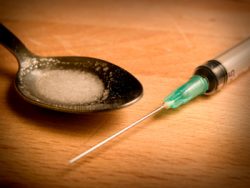Recent crackdowns on the distribution and use of opiate-based prescription pain pills have left addicts searching for alternatives, creating a hole that heroin can easily fill. Today’s easy access to heroin coupled with low its low cost has created the perfect funnel for opiate addicts in search of the next best “high.”
According to the National Institute on Drug Abuse, a 2012 study on heroin abuse practices identified three apparent trends within the Chicago metropolitan area: prescription pain pill abuse, cocaine abuse and poly-drug abuse had become apparent pathways to heroin abuse, with poly-drug abuse trends leading the pack.
While addiction in any form creates a host of problems in a person’s life, poly-drug use makes the process of recovery that much more difficult to endure. As rates of poly drug use continue to rise, the need for more intensive drug treatment programs will increase accordingly.
Population Usage Trends
Once confined to poor, urban areas, heroin abuse has branched out, affecting population groups who’ve remained, for the most part, unaffected in past decades. As of the start of the 21st century, prescription pain pill abuse rates have skyrocketed. Today, this trend appears to be veering off in another direction.
In general, prescription pain pill users tend to come from socioeconomically well off population groups, with easy access to employer-sponsored health care coverage. Tightening restrictions on prescription pain meds have not only cutoff access to drug supplies, but have also driven recreational users to seek out a “newer and better” opiate version: heroin.
As access to prescription pain medications dwindles, rates of heroin abuse among recreational users of prescription opiates are on the rise. In the midst of this transition, a good number of people abusing prescription opiates have taken to using both heroin and prescription opiate meds. In effect, the heroin market has taken on a new customer base: middle-class America.
Opiate Poly-Drug Usage Trends
On average, people who transition over to heroin have abused prescription pain medications for two years prior. The progression starts with ingesting prescription pain pills followed by crushing pills up into powder and injecting them in solution form. From there, users transition over to injecting heroin, though with purer heroin blends on the market, users can just as easily snort the drug rather than injecting. Considering how prescription pain meds and heroin belong to the same class of drugs (opiates), someone addicted to prescription pain meds is 40 times more likely to become addicted to heroin than someone who doesn’t abuse opiates.
The Need for More Intensive Drug Treatment
The standard 30-day drug treatment program remains hard-pressed to address the needs of chronic opiate users, with an oncoming surge of opiate poly-drug users soon approaching. According to Penn State, today’s chronic opiate addict abuses any number of prescription pain meds, such as OxyContin, hydrocodone, codeine and Percocet.
The resulting damage to brain function is extensive, requiring several months of residential-based treatment followed by ongoing outpatient treatment or better yet, long-term sober living treatment programs. Adding heroin to the mix all but guarantees drug treatment programs will be dealing with the most severe forms of opiate addiction.
In light of today’s rising healthcare costs, treatment programs, both short- and long-term, will likely have a difficult time meeting the range of treatment needs opiate poly-drug users have.









